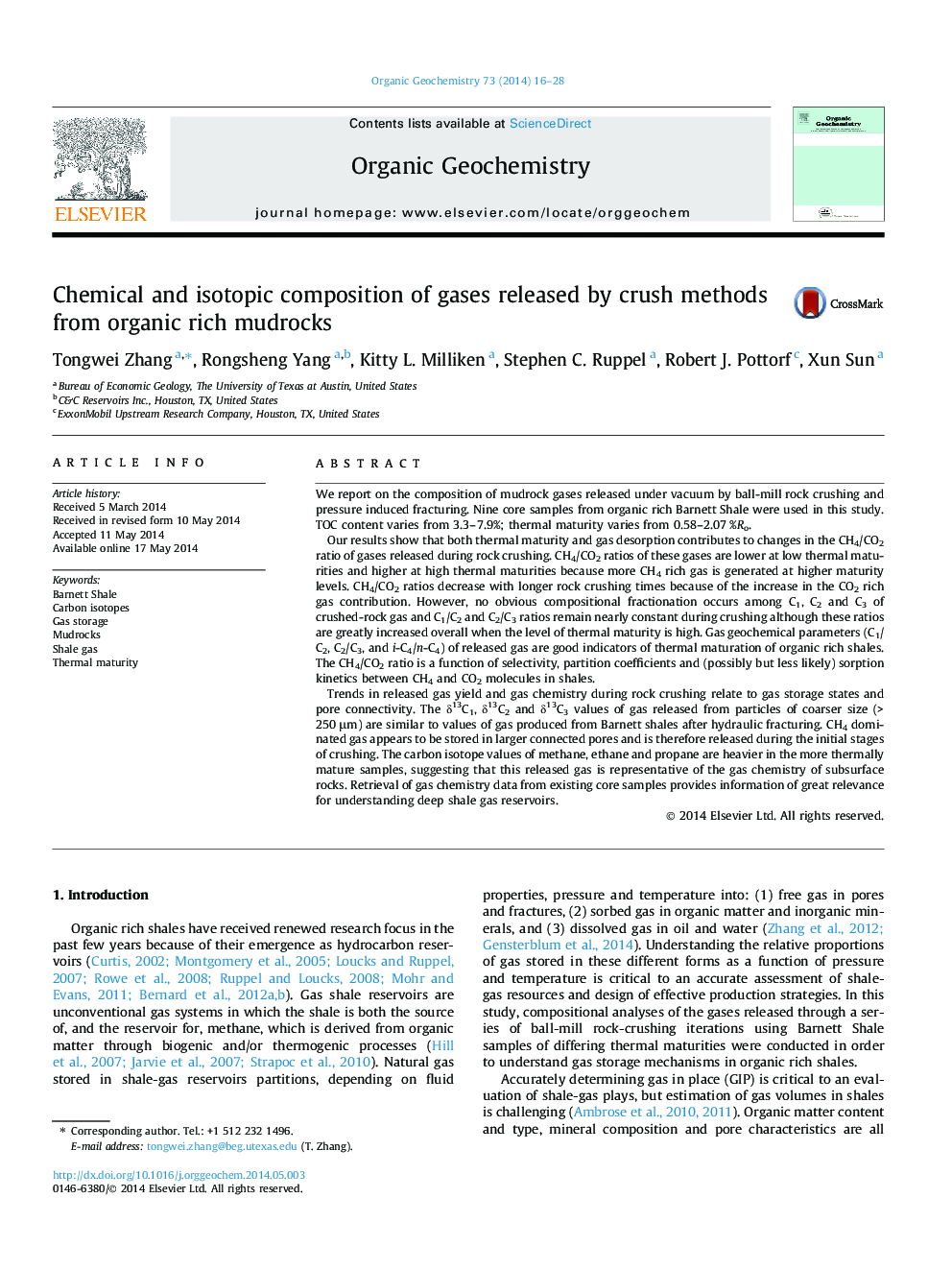| Article ID | Journal | Published Year | Pages | File Type |
|---|---|---|---|---|
| 5162405 | Organic Geochemistry | 2014 | 13 Pages |
Abstract
Trends in released gas yield and gas chemistry during rock crushing relate to gas storage states and pore connectivity. The δ13C1, δ13C2 and δ13C3 values of gas released from particles of coarser size (> 250 μm) are similar to values of gas produced from Barnett shales after hydraulic fracturing. CH4 dominated gas appears to be stored in larger connected pores and is therefore released during the initial stages of crushing. The carbon isotope values of methane, ethane and propane are heavier in the more thermally mature samples, suggesting that this released gas is representative of the gas chemistry of subsurface rocks. Retrieval of gas chemistry data from existing core samples provides information of great relevance for understanding deep shale gas reservoirs.
Related Topics
Physical Sciences and Engineering
Chemistry
Organic Chemistry
Authors
Tongwei Zhang, Rongsheng Yang, Kitty L. Milliken, Stephen C. Ruppel, Robert J. Pottorf, Xun Sun,
